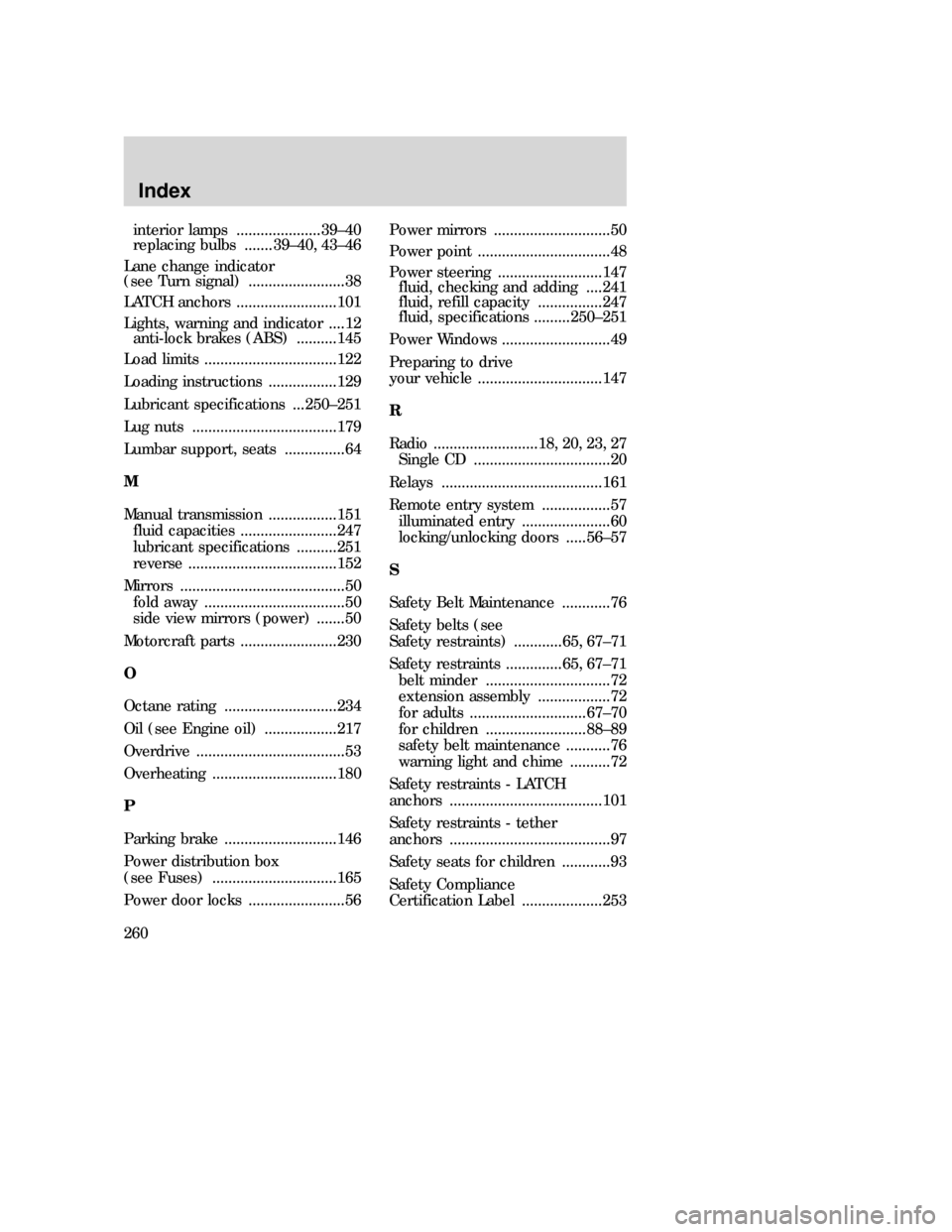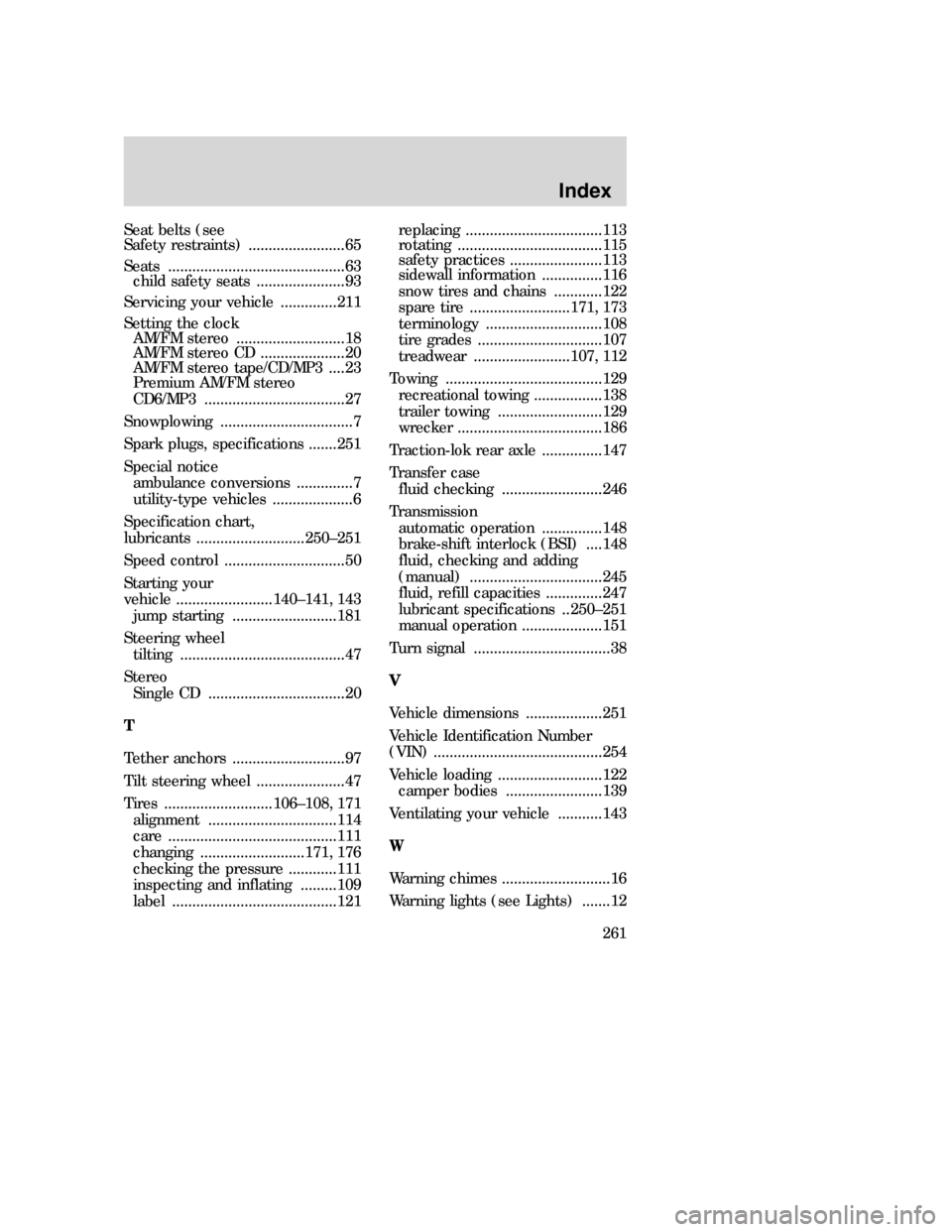warning lights MAZDA MODEL B-SERIES 2006 (in English) User Guide
[x] Cancel search | Manufacturer: MAZDA, Model Year: 2006, Model line: MODEL B-SERIES, Model: MAZDA MODEL B-SERIES 2006Pages: 262, PDF Size: 2.47 MB
Page 142 of 262

If starting a vehicle with a manual
transmission:
1. Make sure the parking brake is
set.
2. Push the clutch pedal to the
floor.
3. Turn the key to 4 (ON) without
turning the key to 5 (START).
If there is difficulty in turning the key, firmly rotate the steering wheel
left and right until the key turns freely. This condition may occur when:
•front wheels are turned
•front wheel is against the curb
•steering wheel is turned when getting in or out of the vehicle
Some warning lights will briefly illuminate. SeeWarning lights and
chimesin theInstrument Clusterchapter for more information
regarding the warning lights.
1
2
34
5
2006 B-Series(mbs)
Owners Guide (post-2002-fmt)
Canadian_French(fr_can)
Driving
142
Page 154 of 262

FOUR-WHEEL DRIVE (4WD) OPERATION (IF EQUIPPED)
WARNING: For important information regarding safe operation
of this type of vehicle, see Preparing to drive your vehicle in
this chapter.
Four–wheel drive (4WD) supplies power to all four wheels. 4WD should
not be operated on dry pavement; driveline damage may occur.
If equipped with the Electronic Shift 4WD System, and 4WD Low is
selected while the vehicle is moving above 3 mph (5 km/h), the 4WD
system will not engage. This is normal and should be no reason for
concern.Refer toShifting to/from 4WD Lowfor proper operation.
4WD system indicator lights
•4x4- Momentarily illuminates
when the vehicle is started.
Illuminates when 4H (4WD High)
is engaged.
•4x4 LOW– Momentarily
illuminates when the vehicle is
started. Illuminates when 4L
(4WD Low) is engaged.
Using the electronic shift 4WD system (if equipped)
2WD- Power to the rear wheels only; used for street and highway driving.
4X4 HIGH- Used for extra traction such as in snow or icy roads or in
off-road situations. Not intended for use on dry pavement.
4X4 LOW- Uses extra gearing to provide maximum power to all four
wheels. Intended only for off-road applications such as deep sand, steep
grades or pulling heavy objects. 4X4 LOW will not engage while the
4x4
4x4
LOW
4X4
HIGH
2WD4X4
LOW
2006 B-Series(mbs)
Owners Guide (post-2002-fmt)
Canadian_French(fr_can)
Driving
154
Page 210 of 262

While operating your vehicle
•Note any changes in the sound of the exhaust or any smell or exhaust
fumes in the vehicle.
•Check for vibrations in the steering wheel. Notice any increased
steering effort or looseness in the steering wheel, or change in the
straight ahead position.
•Notice if your vehicle constantly turns slightly or “pulls” to one side
when traveling on a smooth, level road.
•When stopping, listen and check for strange sounds, pulling to one
side, increased brake pedal travel or “hard to push” brake pedal.
•If any slipping or changes in the operation of your transmission occur,
check the transmission fluid level.
•Check automatic transmission Park function.
•Check parking brake.
At least monthly
•Check function of all interior and exterior lights.
•Check tires for wear and proper air pressure.
•Check engine oil level.
•Check coolant level in the coolant reservoir.
•Check washer fluid level.
At least twice a year (for example, every spring and fall)
•Check power steering fluid level.
•Check clutch fluid level (if equipped).
•Check and clean body and door drain holes.
•Check and lubricate all hinges, latches, and outside locks.
•Check and lubricate door rubber weather strips.
•Check parking brake for proper operation.
•Check lap/shoulder belts and seat latches for wear and function.
•Check air pressure in spare tire.
•Check windshield washer spray and wiper operation. Clean wiper
blades with clean cloth dampened with washer fluid.
•Check safety warning lamps (brake, ABS, air bag, safety belt) for
operation.
2006 B-Series(mbs)
Owners Guide (post-2002-fmt)
Canadian_French(fr_can)
Maintenance and Specifications
210
Page 235 of 262

performance and emission control system protection for your vehicle.
Gasolines that meet the World-wide Fuel Charter should be used when
available. Ask your fuel supplier about gasolines that meet the
World-wide Fuel Charter.
Running out of fuel
Avoid running out of fuel because this situation may have an adverse
effect on powertrain components.
If you have run out of fuel:
•You may need to cycle the ignition from off to on several times after
refueling, to allow the fuel system to pump the fuel from the tank to
the engine.
•The
indicator may come on. For more information on the “Check
Engine” or the “Service engine soon” indicator, refer toWarning
lights and chimesin theInstrument Clusterchapter.
ESSENTIALS OF GOOD FUEL ECONOMY
Measuring techniques
Your best source of information about actual fuel economy is you, the
driver. You must gather information as accurately and consistently as
possible. Fuel expense, frequency of fillups or fuel gauge readings are
NOT accurate as a measure of fuel economy. We do not recommend
taking fuel economy measurements during the first 1,000 miles (1,600
km) of driving (engine break-in period). You will get a more accurate
measurement after 2,000 miles-3,000 miles (3,000 km–5,000 km).
Filling the tank
The advertised fuel capacity of the fuel tank on your vehicle is equal to
the rated refill capacity of the fuel tank as listed in theRefill capacities
section of this chapter.
The advertised capacity is the amount of the indicated capacity and the
empty reserve combined. Indicated capacity is the difference in the
amount of fuel in a full tank and a tank when the fuel gauge indicates
empty. Empty reserve is the small amount of fuel remaining in the fuel
tank after the fuel gauge indicates empty.
The amount of usable fuel in the empty reserve varies and should
not be relied upon to increase driving range. When refueling your
vehicle after the fuel gauge indicates empty, you might not be
able to refuel the full amount of the advertised capacity of the
fuel tank due to the empty reserve still present in the tank.
2006 B-Series(mbs)
Owners Guide (post-2002-fmt)
Canadian_French(fr_can)
Maintenance and Specifications
235
Page 240 of 262

3. The fuel cap may not have been securely tightened. SeeFuel filler
capin this chapter.
These temporary malfunctions can be corrected by filling the fuel tank
with good quality fuel and/or properly tightening the fuel cap. After three
driving cycles without these or any other temporary malfunctions
present, the
indicator should turn off—A driving cycle consists of a
cold engine startup followed by mixed city/highway driving. No additional
vehicle service is required.
If the
indicator remains on, have your vehicle serviced at the first
available opportunity.
Readiness for Inspection/Maintenance (I/M) testing
In some localities, it may be a legal requirement to pass an I/M test of
the on-board diagnostics system. If your
indicator is on, refer to
the description in theWarning lights and chimessection of the
Instrument Clusterchapter. Your vehicle may not pass the I/M test with
the
indicator on.
If the vehicle’s powertrain system or its battery has just been serviced,
the on-board diagnostics system is reset to a “not ready for I/M test”
condition. To ready the on-board diagnostics system for I/M testing, a
minimum of 30 minutes of city and highway driving is necessary as
described below:
•First, at least 10 minutes of driving on an expressway or highway.
•Next, at least 20 minutes driving in stop-and-go, city-type traffic with
at least four idle periods.
Allow the vehicle to sit for at least eight hours without starting the
engine. Then, start the engine and complete the above driving cycle. The
engine must warm up to its normal operating temperature. Once started,
do not turn off the engine until the above driving cycle is complete.
2006 B-Series(mbs)
Owners Guide (post-2002-fmt)
Canadian_French(fr_can)
Maintenance and Specifications
240
Page 260 of 262

interior lamps .....................39–40
replacing bulbs ....... 39–40, 43–46
Lane change indicator
(see Turn signal) ........................38
LATCH anchors .........................101
Lights, warning and indicator ....12
anti-lock brakes (ABS) ..........145
Load limits .................................122
Loading instructions .................129
Lubricant specifications ...250–251
Lug nuts ....................................179
Lumbar support, seats ...............64
M
Manual transmission .................151
fluid capacities ........................247
lubricant specifications ..........251
reverse .....................................152
Mirrors .........................................50
fold away ...................................50
side view mirrors (power) .......50
Motorcraft parts ........................230
O
Octane rating ............................234
Oil (see Engine oil) ..................217
Overdrive .....................................53
Overheating ...............................180
P
Parking brake ............................146
Power distribution box
(see Fuses) ...............................165
Power door locks ........................56Power mirrors .............................50
Power point .................................48
Power steering ..........................147
fluid, checking and adding ....241
fluid, refill capacity ................247
fluid, specifications .........250–251
Power Windows ...........................49
Preparing to drive
your vehicle ...............................147
R
Radio ..........................18, 20, 23, 27
Single CD ..................................20
Relays ........................................161
Remote entry system .................57
illuminated entry ......................60
locking/unlocking doors .....56–57
S
Safety Belt Maintenance ............76
Safety belts (see
Safety restraints) ............65, 67–71
Safety restraints ..............65, 67–71
belt minder ...............................72
extension assembly ..................72
for adults .............................67–70
for children .........................88–89
safety belt maintenance ...........76
warning light and chime ..........72
Safety restraints - LATCH
anchors ......................................101
Safety restraints - tether
anchors ........................................97
Safety seats for children ............93
Safety Compliance
Certification Label ....................253
2006 B-Series(mbs)
Owners Guide (post-2002-fmt)
Canadian_French(fr_can)
Index
260
Page 261 of 262

Seat belts (see
Safety restraints) ........................65
Seats ............................................63
child safety seats ......................93
Servicing your vehicle ..............211
Setting the clock
AM/FM stereo ...........................18
AM/FM stereo CD .....................20
AM/FM stereo tape/CD/MP3 ....23
Premium AM/FM stereo
CD6/MP3 ...................................27
Snowplowing .................................7
Spark plugs, specifications .......251
Special notice
ambulance conversions ..............7
utility-type vehicles ....................6
Specification chart,
lubricants ...........................250–251
Speed control ..............................50
Starting your
vehicle ........................140–141, 143
jump starting ..........................181
Steering wheel
tilting .........................................47
Stereo
Single CD ..................................20
T
Tether anchors ............................97
Tilt steering wheel ......................47
Tires ...........................106–108, 171
alignment ................................114
care ..........................................111
changing ..........................171, 176
checking the pressure ............111
inspecting and inflating .........109
label .........................................121replacing ..................................113
rotating ....................................115
safety practices .......................113
sidewall information ...............116
snow tires and chains ............122
spare tire .........................171, 173
terminology .............................108
tire grades ...............................107
treadwear ........................107, 112
Towing .......................................129
recreational towing .................138
trailer towing ..........................129
wrecker ....................................186
Traction-lok rear axle ...............147
Transfer case
fluid checking .........................246
Transmission
automatic operation ...............148
brake-shift interlock (BSI) ....148
fluid, checking and adding
(manual) .................................245
fluid, refill capacities ..............247
lubricant specifications ..250–251
manual operation ....................151
Turn signal ..................................38
V
Vehicle dimensions ...................251
Vehicle Identification Number
(VIN) ..........................................254
Vehicle loading ..........................122
camper bodies ........................139
Ventilating your vehicle ...........143
W
Warning chimes ...........................16
Warning lights (see Lights) .......12
2006 B-Series(mbs)
Owners Guide (post-2002-fmt)
Canadian_French(fr_can)
Index
261